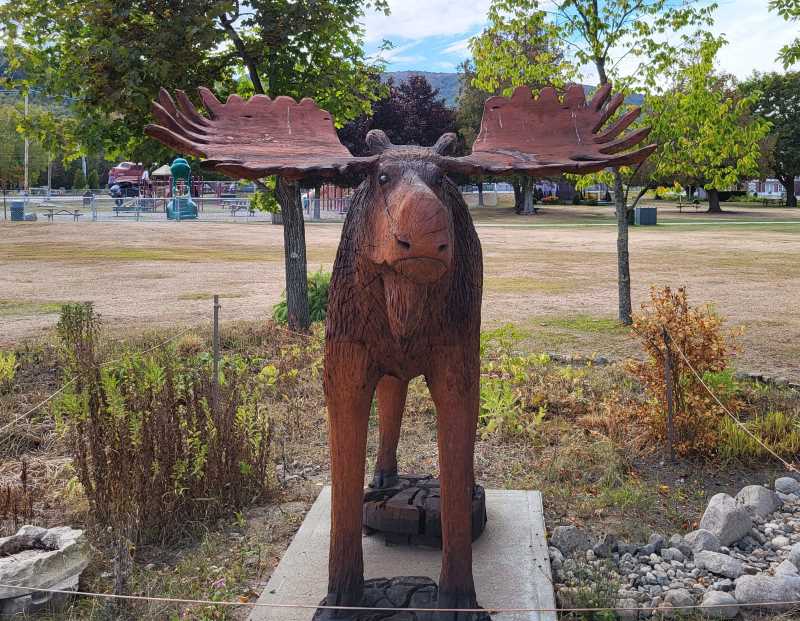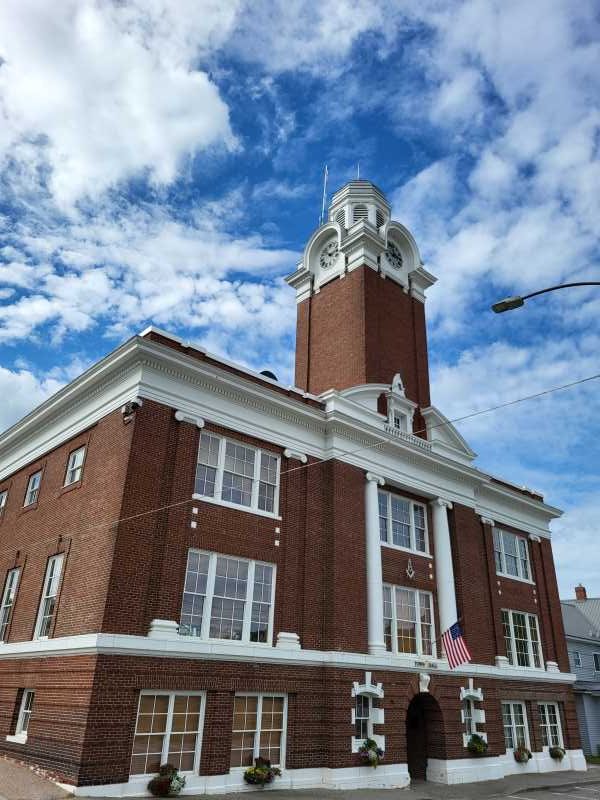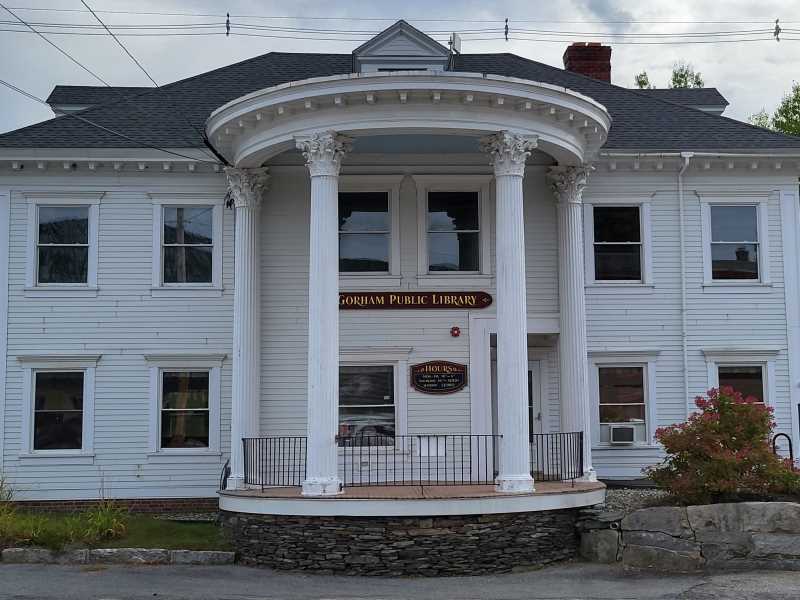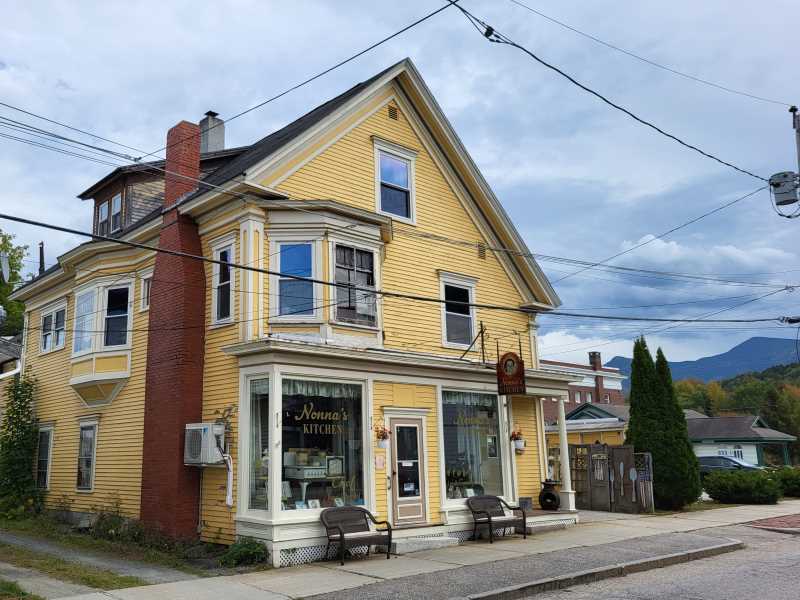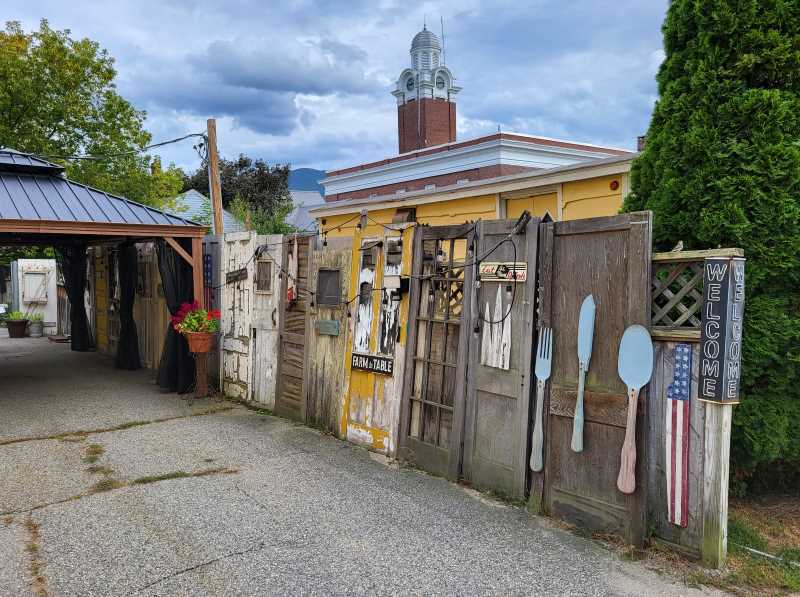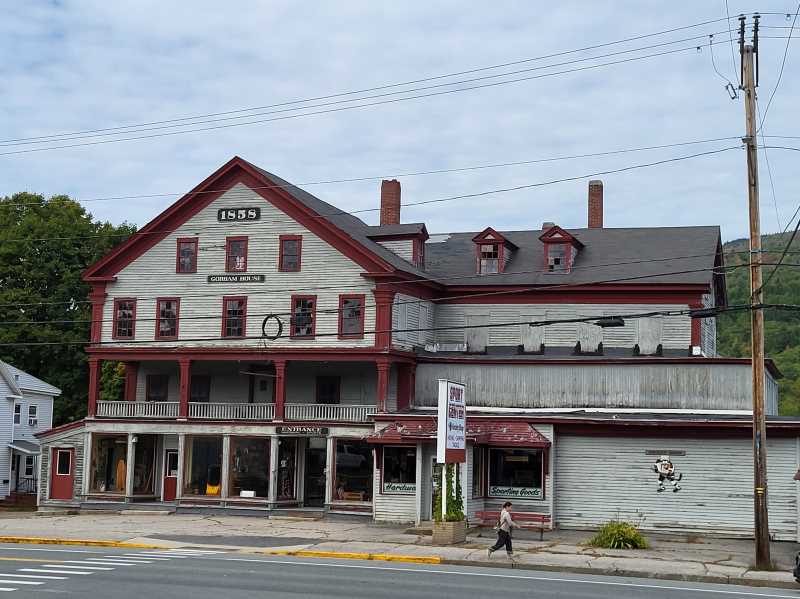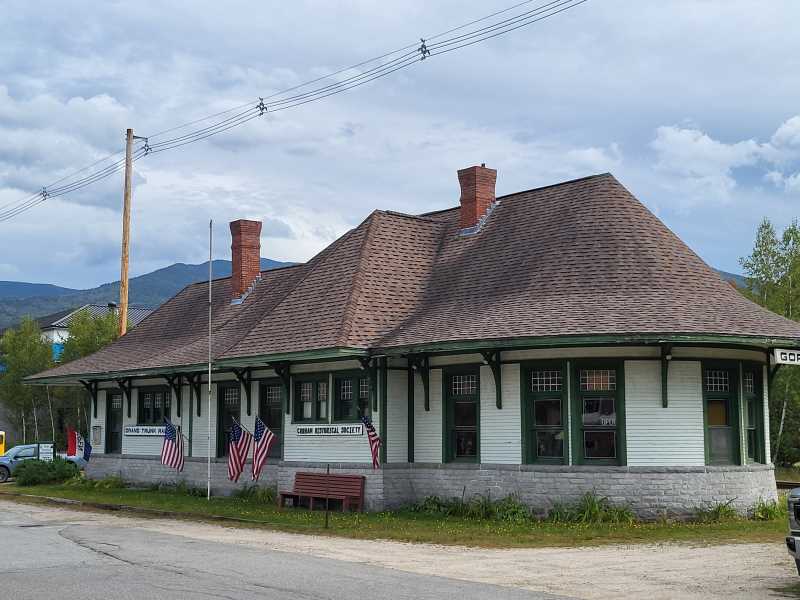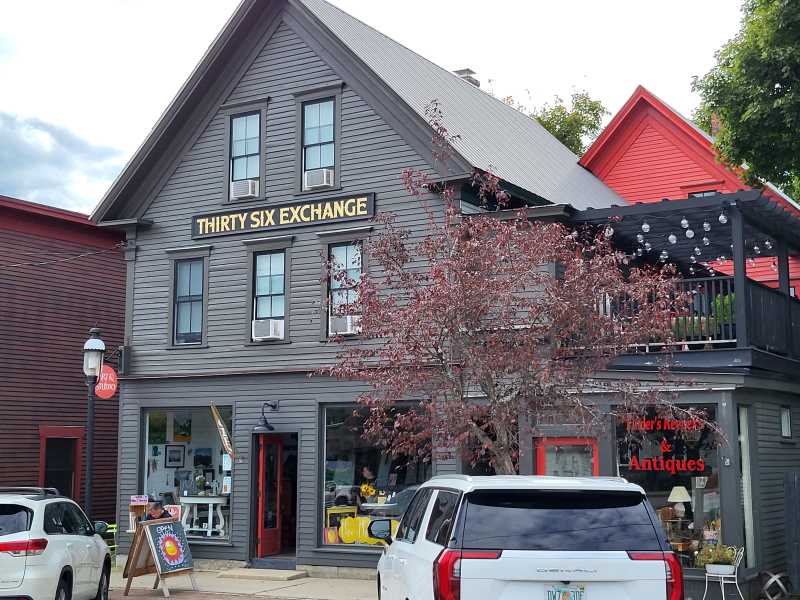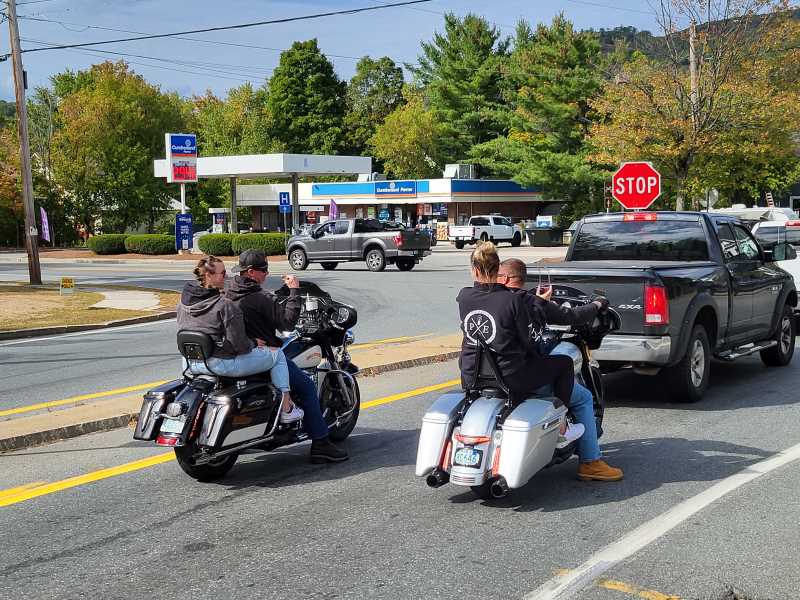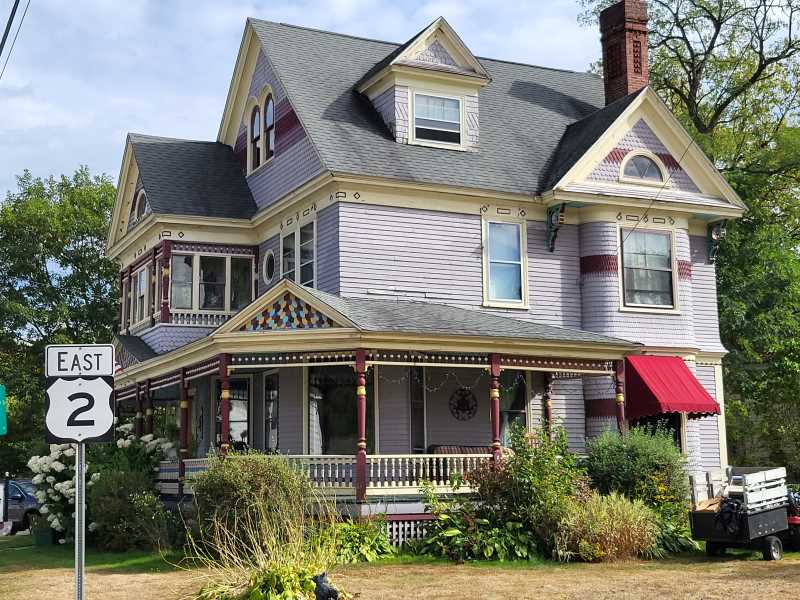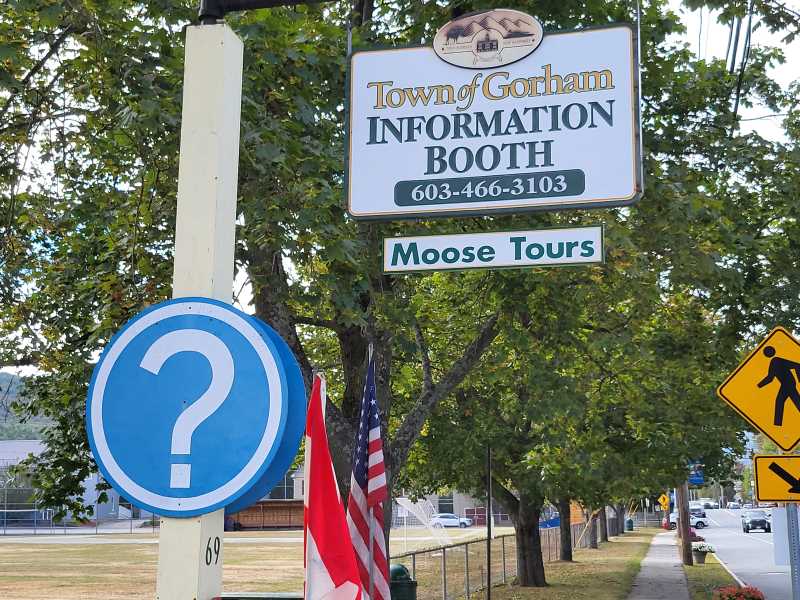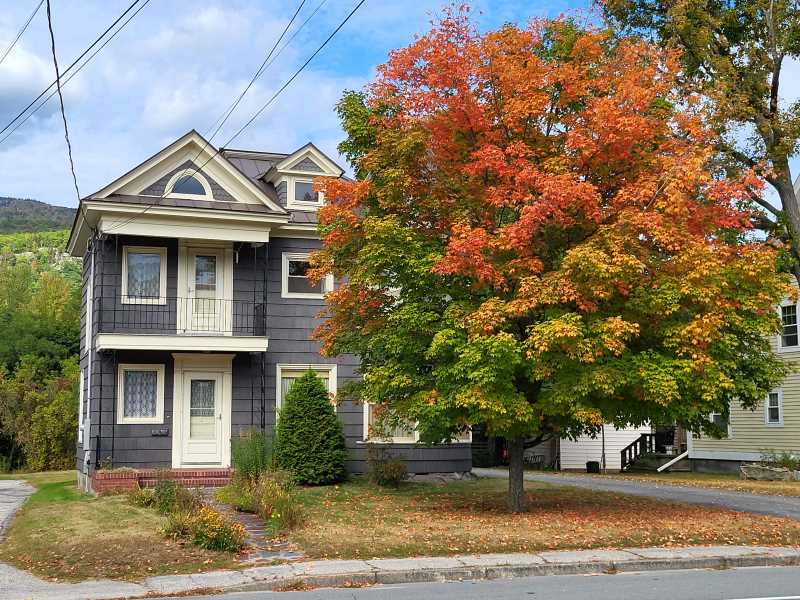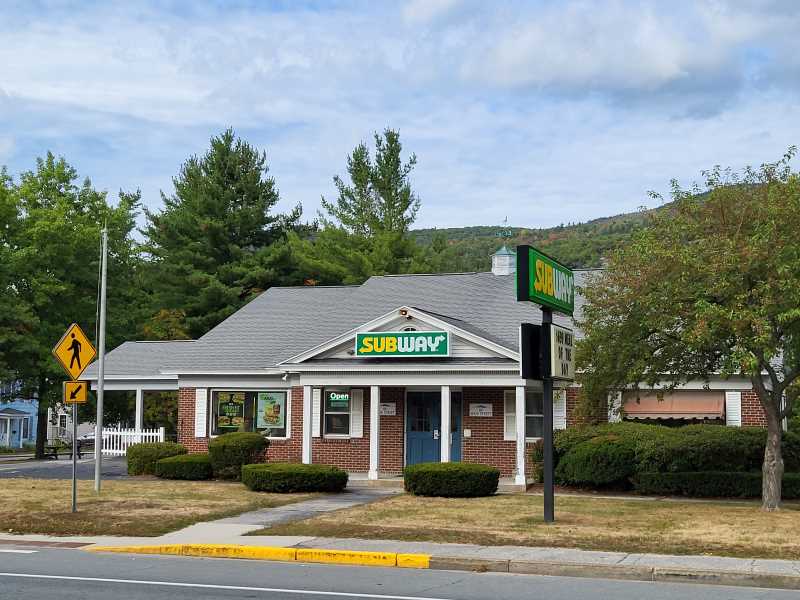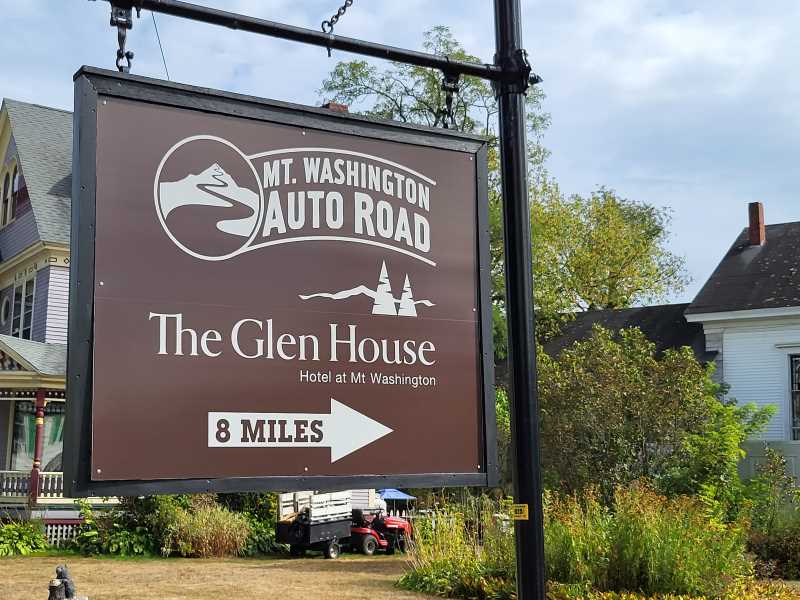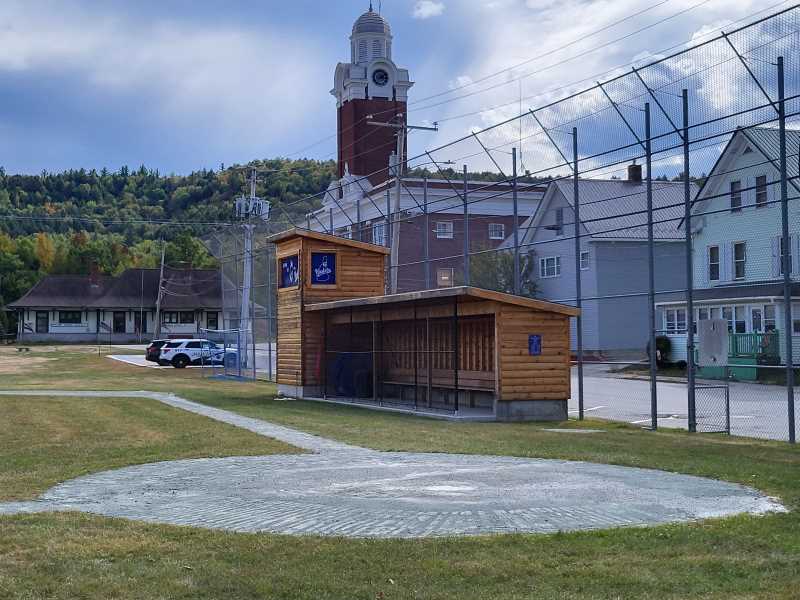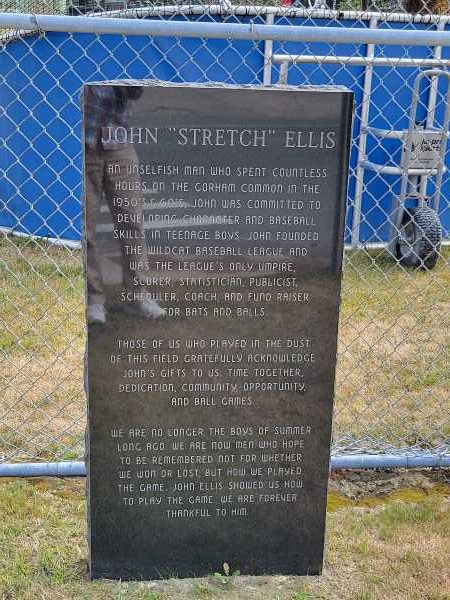We idled away an afternoon in Gorham, New Hampshire last weekend. Strictly for adventure.
Of course our idea of adventure might differ from yours. We weren’t scaling mountains on roller skates or whitewater rafting in dugout canoes or hunting bears with knapped flint knives or anything extreeeem! enough to get RedBull to sponsor us. We plain forgot to take a vertically oriented cellphone image of my wife leading me by the hand into the third ice cream shop photo op of the day, so our influencer cred is also at an all-time low. We simply went to Gorham because we were tired of going places we’ve already been, and we wanted to poke around somewhere newish. On a whim, we decided to erase the dotted line between Oxford County Maine and Coos County New Hampshire, and see what there was to see.
In some ways, not much. Gorham isn’t a big place. Just 2,700 souls. Except for 1980, when the census takers found 24 extra people hiding out in Gorham, the town has been slowly whittling itself down since Nixon was muttering to himself in the Oval Office. But despite sporting a meager quorum for lynch mobs or 10K runs, we found that Gorham really bustles. For comparison, the nearest “city” in Maine is Rumford, about 45 minutes drive northeast of Gorham. Rumford has twice as many people as Gorham, but about ten percent of the activity. And only about ten percent of that ten percent is salubrious activity. Both Gorham and Rumford share Route 2, and the Androscoggin River, but the resemblance more or less ends there.
There was lively traffic in Gorham, and lots of parents with children in the playground at the big park. Some women were inexpertly playing what I assume was pickleball at the tennis courts nearby. I have to assume they were playing pickleball, because I don’t know what pickleball is. The game has been described to me by several enthusiasts, but I still had trouble understanding it. Near as I can tell, it’s like playing ping pong outdoors while standing on the table, with the added attraction of making an unpleasant noise when striking the ball.
I may have just defamed the ladies, of course, by describing their exertions as “inexpert.” Since I’m so in the dark about the game itself, it’s possible that they were Olympic-class pickleball devotees. It could very well be that the game is supposed to be played in their sedate, but somehow spastic manner. I am beset by doubts on that score. But I quibble. I lived in the population desert of western Maine for close to fifteen years. It’s nice to see anyone doing anything.
That’s the town hall. It’s a glorious Federal style pile of bricks, ain’t it? We’ve lost the knack of making public building look important while still appearing friendly to humans. The average town hall in most towns in the US resemble either a trailer park model home or a Soviet abattoir.
Bricks are relatively cheap. We should still be able to build structures like this. but we can’t, or won’t, take your pick.
As is common in public buildings in small New England burgs, the town hall is doing double duty as a gathering place for the locals, even those not paying a water bill. Around the side, in the nether regions of the building, the Medallion Opera House is still going strong. Well, it’s going. The contra dance sounds like fun, and you don’t even have to go to Central America to participate. And Don Who? sounds a bit like a nursing home rec room entertainer, but in far flung places, you take your fun where you can find it.
Speaking of attractive public buildings, here’s the Gorham Public Library. To me, a library is (was, I mean) a temple to learning. I spent most of my childhood haunting the first public library in the United States, and I will always have a soft spot for one. Of course, there are comparatively no books in most any library anymore, and what they do have is dreadful, but at least this one doesn’t look like a strip mall clothing store, like nearly any new one does.
We would eat in Nonna’s Kitchen. You know, if was open, which it wasn’t. Like a lot of small town restaurants, they limit their hours and days to keep their staff costs down. There’s only so many times a small population can be counted on to patronize a restaurant on a regular basis. Their menu was a 250-yard drive right down the Italian fairway, and in the scheme of things, not very expensive. The building rambles back on the lot, in a nod to the little house-big house-back house-barn style common in northern New England. It was never a farm, to adhere closely to the description of the archetype at Wiki, but close enough. It used to be a barber shop. I loved the entrance to the “dooryard” out back:
Gorham is a jolly place, and fun to wander around.
It’s got a hardware store that apparently doesn’t carry enough paint or roofing shingles to spare for the local population, because they don’t have enough for themselves. They’re right out of window glass, too, by the looks of it. It’s a grand old Greek Revival place, but destined to burn to the ground, I’m afraid. Half-used buildings like this might as well be made of matchsticks.
They have a train station that isn’t anymore. The car killed most passenger traffic, and trucks killed freight, so lots of New England towns have leftover buildings like this one. In Gorham, they turned it into the historical society, and kept it up beautifully. To compare and contrast, we go to the nearby town of Gardiner, Maine, and they have a beautiful disused train station, and it’s a dope store. Maine is pretty much contiguous dope stores from lighthouse to mountain top at this point. New Hampshire has avoided that pitfall by having tax-free liquor stores all over the place instead.
Right next to the historical society, they’ve got some history on display. There’s a nifty train museum. The boxcars have some sort of miniature train running inside them, but we didn’t go in to see it. The doors were closed, with a sign that told us to go find a docent next door if we wanted in. It would have been impolitic to wake him, we decided, so we kept on trucking.
Gorham hasn’t succumbed to the siren song of vinyl siding much. More than occasionally you encounter color combos that knock your eye out, like this juxtaposition of gray and scarlet. Very nice.
New Hampshire is very much into the internal combustion engine, in all its forms. The parking lot of the pizza joint we ate in was about fifty percent full of ATVs and motorcycles. People drive around Gorham in mud-spattered four-wheelers the way geriatrics in golf carts do in Florida. And I’m not sure how many people are still interested in hearing Wonderful Tonight by Eric Clapton, played at 90 decibels at a stop light, but I discovered four people who are.
There’s a lot of nifty Victorian buildings in town. Here’s one, a bed and breakfast on the main drag. Sorry, if you’re interested in running the place, but there was a SOLD banner pasted over the realtor’s face on the sign out front. I’ve met a lot of realtors, and wanted to slap a sign like that over some of their faces in real life.
It’s a shame, but they were closing up the information booth right as we were passing. I did have some questions I would have liked answers for. For example, Moose Tours? How do you get the moose onto the tour bus? Don’t their antlers get hung up on the doorframes and luggage racks and so forth? And what exactly do you show the moose on these tours? Foliage? They eat that. I can’t imagine trying to beguile an alces alces by telling them to look out the window at leaves, and another moose. Alas, these questions will remain unanswered.
Speaking of foliage, it’s already getting busy in Gorham. I’m sure they get their share of leaf peepers. Maybe they can stop the bus and eat at Nonna’s, if they time it just right. But more likely, they’ll eat here:
Uh, yeah. You can totally put tables and chairs in the drive through lane to try to put us off the scent, but we know this used to be a bank, fellas. It’s an interesting transformation, for several reasons. For instance, if I was in a town with 2,700 people in it, and had a choice between robbing the bank, and robbing the sandwich shop, I’d choose the sandwich shop. There’s probably a lot more money in the till than they ever had at the bank.
If you’re wondering what it’s like in Gorham after the leaves commit their colorful suicide and plug up the storm drains, that sign should give you a clue. Mount Washington isn’t far from Gorham, and Mt. Washington weather is a stone cold beeatch in the winter.
They’ve got a baseball diamond appended to the big public park, and it’s in great shape, and still gets plenty of use. You know you’re in New Hampshire, because the dugouts are log cabins. Go you Huskies!
And there, tucked in a quiet spot behind the chain link fence at the diamond, I found this, a true indication of the kind of people who live in Gorham, New Hampshire:
John “Stretch” Ellis
An unselfish man who spent countless hours on the Gorham Common in the 1950s and 1960s, John was committed to developing character and baseball skills in teenage boys. John founded the Wildcat Baseball League and was the league’s only umpire, scorer, statistician, publicist, scheduler, coach, and fund raiser for bats and balls.
Those of us who played in the dust of this field gratefully acknowledge John’s gifts to us: Time together, dedication, community opportunity, and ball games.
We are no longer the boys of summer long ago. We are now men who hope to be remembered not for whether we won or lost, but how we played the game. John Ellis showed us how to play the game. We are forever thankful to him.
New Hampshire license plates have the motto: Live Free or Die embossed on them. I know it won’t fit, but Time Together, Dedication, Community Opportunity, and Ball Games would make a wonderful replacement.


